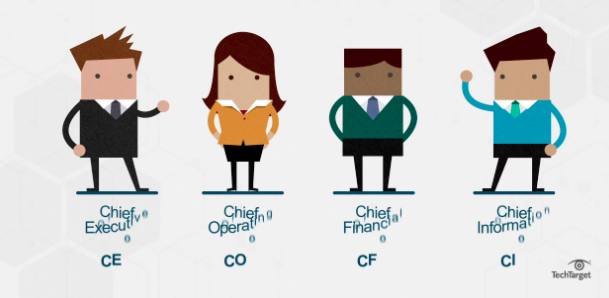
All the key people involved in the deal are required to approve it. This article will help to identify the critical decision-maker and influencers.
The Ultimate Decision Maker
Salespeople often find it challenging to identify the final decision maker or other high-ranking influencers. Salespeople are often confused by subordinates and information gatherers who claim to be final decision-makers. Some keep this information secret in fear that the salesperson will attempt to contact these high-ranking influencers or the ultimate buyer. It is challenging for salespeople to manage the selling process when they don’t know the names of the most influential people.
Salespeople assume that their primary contact or the next commanding officer above them will make the decision. They will then attempt to rise to the top and stop trying to reach others. Sometimes a committee is formed, and it is believed that they make the final decision. Who assigns the committee? And who receives the recommendation of the committee?
B2B sales can be influenced by many people, especially those who are worth more than $10,000. However, these influencers often keep a low profile or remain invisible. Vendors rarely consider these people involved in direct buying. Their inputs are still heard by the final decision-maker. These other managers can offer their opinions and help to make purchases more interesting in staff meetings, lunches, and casual office conversations. These leaders and influencers are key to salespeople hoping their persuasive information is being used in a positive way by the boss. This is called “lack of control”, which is a sign of failure.
Get Ready to Prepare!
1. Find out who the top people in your organization are. These are the ones that report directly to the profit center leader. Take a look at the org chart and ask who is really in charge of what happens.
2. Spread like a virus. Reach out to others beyond your primary contact. Ask your contact to introduce you to other connections at the same or higher level. You use this method because you want to find out about the expectations and benefits of other affected people.
3. Ask the person who can approve without having to go to another. Consider another level. Consider asking yourself: “Will the person that I consider the ultimate authority discuss this project before he approves to buy?” If yes, then the higher authority is involved.
4. Think about the people that this leader interacts with every day. These are the people he or she has to influence, and they can speak about anything. These people are you familiar with?
5. Pay attention to PO’s and check signing authorities. Legal representatives and purchasing managers may sign, but they should be directed by others. Signing limits are required for purchases or projects that have been approved by fundamental managers. Be sure to check the limits and see where your sale falls within them. Budgets are not authorizations to spend.
6. Never believe that someone is just a rubber stamp. The stamp is there for an important reason. You will need to be sure of certain things before you stamp. Are you confident of what these things are?
7. What about the top execs? A change in the health benefits can have a significant impact on everyone, even top executives. They will be involved, even though they are responsible for the HR person. A substantial change in product components or maintenance suppliers will not be implemented unless there is a competitive advantage, financial impact, or significant change. Don’t underestimate the effect on the top – not only financially.
8. 8. Staff will discuss anything exceeding $10,000. Because there are limited resources, and it is a hot topic about who gets the money and who doesn’t.
9. Ask other vendors if they approved purchases of the same magnitude and impact. Ask your contacts, Golden Network members, service personnel, admins, and functional people about similar projects.
You Can Take It To The Street
Choose an account that has more business. Who are the functional people that you deal with? Who are their associates, the outs? Who are their senior staff and profit center leaders – the ups? Who are the administrators? Admins, purchasing, etc. You can list the titles of people and mark it with a giant question mark “?” if you don’t remember their names. This is your signal to dig deeper. You can create a plan to reach them if you know the identity of someone you don’t know. You are in danger if you don’t see the person who is making the decisions.
Here’s an example.
My client, a highly skilled salesperson, and top manager, recently closed a large engineering contract with a Midwestern state agency. When I asked him who approved the deal, his answer was the Secretary for Transportation. I asked him if the project was worthwhile and if it had high visibility. He replied “Yes” to both. I asked him if he thought the secretary had bailed his selection of consultants from the Governor before committing to you. He took his time and finally answered, “Yes.” He continued to explain that they had formed a partnership with another firm due to the Governors’ office connections.
Although he claimed it was the Secretary for Transportation, he knew that the Governor would be involved due to the size and visibility. He had chosen a firm that could provide that coverage, and he partnered with them.
Governors, CEOs, and presidents are often involved, sometimes in a heavy and sometimes subtle way. At lunch, a company name is casually mentioned. A raised eyebrow or a long, “Well ….” and the Secretary receives the message. He could also be direct and simply say “No.”
I hope my message is clear. After the leader and his staff are involved, the final decision is made. It’s a red flag if no one is present to support you.